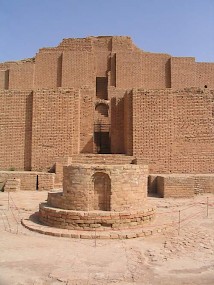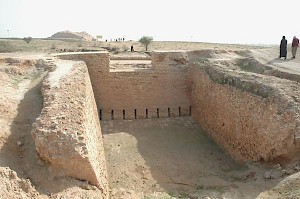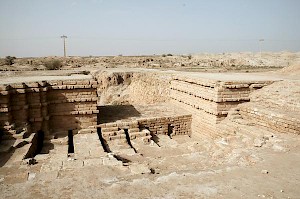Dur Untaš (Choga Zanbil)
Q4523
The ziggurat of Choga Zanbil is one of the most impressive monuments of modern Khuzestan, and must have been one of the most impressive monuments of ancient Elam, dominating a city that was founded by king Untaš-Napiriša (c.1275-c.1240) and named after him (Dur Untaš, "city of Untaš-Napiriša"). Although founded to become the king's residence, the city was never quite finished. Still, it survived its builder with more than two centuries, and there must have been people living in Dur Untaš well after 1000 BCE, because the Assyrian king Aššurbanipal was to claim in 646 BCE that he had destroyed the town.

Dur Untaš measured about one square kilometer and was surrounded by a four kilometer wall. It was built on high ground, more than fifty meters above the nearby river Eulaeus (Dez), which made it difficult to bring water to the city. The solution Untaš-Napiriša found, betrays his ambitions: he ordered his engineers to build a canal from Susa, where fresh water was diverted from the Choaspes river (Karkheh). It passed along Haft Tepe, was diverted into nine branches, and finally reached the new town.

Unfortunately, the water of the Karkheh is full of mud and, because it was downstream from Susa, polluted and unhealthy. So it was necessary to clean it before it could be used in Dur Untaš. Therefore, refineries were built in which the water was conducted through several basins. The refinery that has been excavated, is the is oldest one known monument of this type in the world.
The city itself consisted of several parts. There was the ziggurat in the center, surrounded by an inner court with some minor religious buildings. This was in turn surrounded by an outer court, almost rectangular in shape (measuring 400 x 500 meters), with corners facing the north, east, south, and west. Here, one could find the royal palace with the royal tombs, the temple of the Babylonian god Nusku and several other sanctuaries.